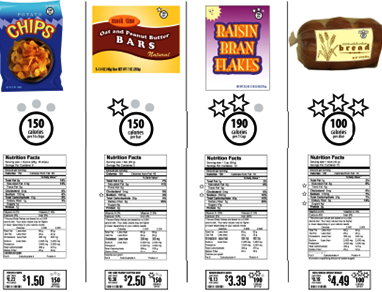Pondering the Weight of the Nation
I’ve been asked to comment on the HBO series, Weight of the Nation and everything that comes with it: the accompanying book, the auxiliary videos, the distribution plan to schools and other institutions, and the Institute of Medicine’s report, Accelerating Progress in Obesity Prevention.
Because I wanted to look at all of it before commenting, plenty of others have beaten me to it, among them FoodandTechConnect’s infographic summary, Kerry Trueman on AlterNet and Michele Simon on Grist.
I don’t have HBO but got sent the press kit, the Weight of the Nation book, the disks, and the IOM report. I watched all four hours of the HBO series, plus the “Rethinkers” video of kids working on a school lunch project in New Orleans (air dates), plus the IOM and HBO books, plus the website.
Overall, Weight of the Nation makes the size, scope, causes, and consequences of obesity alarmingly clear.
The talking heads—many of them my friends, colleagues, and former students—all had plenty to say about what obesity means on a day-to-day basis for individuals and its personal and economic cost to society.
The programs ought to convince anyone that obesity is a big problem and that something big needs to be done to prevent it.
But doing something big, the series makes clear, will be very difficult.
This may be realistic, but it is not inspiring.
We need inspiration. That’s why I wish the programs had focused as much on social responsibility as they did on personal responsibility.
I wanted to see the programs take leadership on how government can help citizens reduce the social, economic, and business drivers of obesity.
That kind of leadership exists. To see it in action, watch the video of the New Orleans school “rethinkers.” Those kids wanted to improve their school lunches. They got busy, dealt with setbacks, and learned how to make the system work for them. They “spoke truth to power” and “held feet to the fire.”
Why aren’t adults doing the same? Politics, the IOM report explains. Although one of its principal recommendations is critical—Create food and beverage environments that ensure that healthy food and beverage options are the routine, easy choice—its recommendations speak some truth to power but do little to hold feet to the fire.
The IOM report explains the political realities:
The committee’s vision takes into account the need for strategies to be realistic, as well as consistent with fundamental values and principles. At the same time, however, having a diversity of values and priorities among them is itself a principle of U.S. society.
Potentially competing values and principles must be reconciled, for example, in considering protections needed for individuals versus the community at large or for the public versus the private sector.
Vigilance regarding unintended adverse effects of changes undertaken to address the obesity epidemic is also needed.
“Americans,” the report says, are accustomed to the current obesogenic environment, one “driven by powerful economic and social forces that cannot easily be redirected.”
It may not be easy to redirect such forces, but shouldn’t we be trying?
In 1968 the CBS documentary Hunger in America galvanized the nation to take action to reduce poverty and malnutrition.
The HBO series was equally shocking but I wish it had focused more on how we—as a society—could mobilize public distress about the poor quality of food in schools and the relentless and misleading marketing of sodas and junk foods that it so well documented.
But dealing with the need to address the social and economic forces that promote obesity would, I’m told, be considered lobbying, which the private-public sponsors of the series are not permitted to do.
Mobilizing public support for health is considered lobbying. Food industry marketing is not.
FoodNavigator-USA.com columnist Caroline Scott-Thomas wrote about the HBO series:
As an industry journalist, I’ll be among the first to admit that industry is stuck in a very hard position here: On the one hand, it wants to be seen to be doing the right things – but on the other, what people say they want to eat, and what they actually do eat are often very different, and after all, food companies are in the business of making money.
But honestly, could industry do more to make healthy choices routine, easy choices? I think so.
Yes it could, but won’t unless forced to.
Without leadership, we are stuck doing what the food industry needs, not what the public needs.
Weight of the Nation did an impressive and compelling job of defining the problem and its causes and consequences. I wish it—and the IOM—could have risen above the politics and pressed harder for strategies that might help people make healthier choices.
But—if the HBO programs really do help mobilize viewers to become a political force for obesity prevention, they will have been well worth the effort that went into making and watching them.



